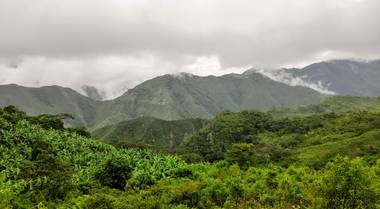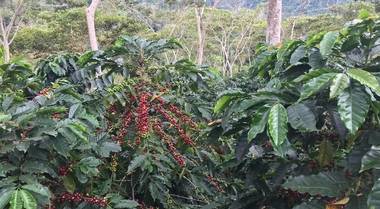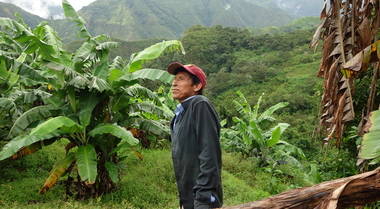The Best Peruvian Coffee Beans
June 16, 2023
by Natasha Nesic

We’ve been talking about one of the main factors in why good coffee— real good coffee, like the ones we source at Lardera— tastes so good: terroir.
No, not terrier as in dog, or terror as in fear. (Unless you’re super scared of bad coffee. I wouldn’t blame you.)
“Terroir” is the term for the origin area of a certain food product, and how that particular environment can influence its ultimate flavor and nutritional profile.
In our previous article, we discussed how Costa Rica’s terroir renders it so unique and fun to explore the resulting cups of coffee, but there are so many other coffee-growing countries to decode and choose from!
That’s why today, we’re taking a trip to Peru, and figuring out exactly what about that special climate makes it so excellent for happy, healthy beans. Let’s go!
1. Mountains
If you look at Lardera’s sassy Geisha Caturra Washed beans, then you’ll notice it says, “Peru’s climate, altitude, and soil conditions are ideal for cultivating great coffee.”Climate and soil are usually self-explanatory, so I want to draw your attention to the concept of altitude. How low or high a landform might be located above sea level affects air pressure and atmosphere, which in turn affects the level of oxygen that the plants can process and therefore goes on to affect the nutrients that said plants produce. And even if you’re not a health nut, you definitely want to care about nutrients— that’s where you get all the flavor!
And that’s why Peru’s altitude creates a mild, fragrant cup that doesn’t overpower your senses.
2. Valleys
Now, if you shift your perusal— no pun intended— over to Lardera’s Monobamba Washed beans, then that gorgeous picture of the Amazonian rainforest says it all, in my opinion.If higher altitudes reduce the oxygen and nutrient-derived flavor in a cup, then lower altitudes— like this one, deeply situated near the wilds of the jungle— will provoke extra flavor capacity since the plants get to absorb so much richness from the ground.
Just pop this a drip pack of one into your handy-dandy pour-over, and tell me you don’t taste what I mean.

3. Soil
Let’s get down and dirty— or should I say, down and dirt-y? Down with the dirt? Down in the dirt?Well, before we break for you to tell me your preferred turn of phrase in the comments section below, let’s figure out what soil really means for a good brew.
Lardera’s Junin Anaerobic is a great example of how being grown in a tropical location encourages tropical flavors to manifest in the beans. It makes sense, right? The same soil that’s known for producing great Peruvian fruits like mango and cacao should easily be able to contribute to the production of those taste-making nutrients to its coffee beans.
4. Shade
I was going to make more jokes about not being shady about this, but I think that the above dirt puns are enough for one article.Shade is extra important to the bean-growing process because it helps regulate the amount of sunlight that could reduce or increase the flavors present in the maturing crop. Junin is a region in Peru where “microclimates” proliferate, creating many opportunities to control the amount of shade that goes into producing a successful cup of coffee— all the more reason to try Lardera’s delicately amazing Junin Natural!

5. Seasons
I mentioned “microclimates” up there in the Shade section because different climates— micro or otherwise—will experience seasons very differently from what we might be used to in more temperate regions like the United States.Always bear in mind that coffee is grown in places that alternate between dry, arid seasons and heavy, wet ones, and Peru is no exception. This affects the flavor because every season is a test of all of the above factors that contribute to the overall life cycle of the coffee bean. Harsh rains can thin out the soil, excessive dry sun can bleach away subtle fruity accents, and too much shade from rainclouds or craggy valleys can cause plants to wither without the chance to complete photosynthesis.
Luckily, none of the Lardera coffees have fallen victim to seasonal mishaps because of the quality of care and attention they receive from their dedicated farmers. Hats off and coffee-glasses raised to bean-master Edison Villa Loayza!
What’s your favorite Lardera coffee from this region?

